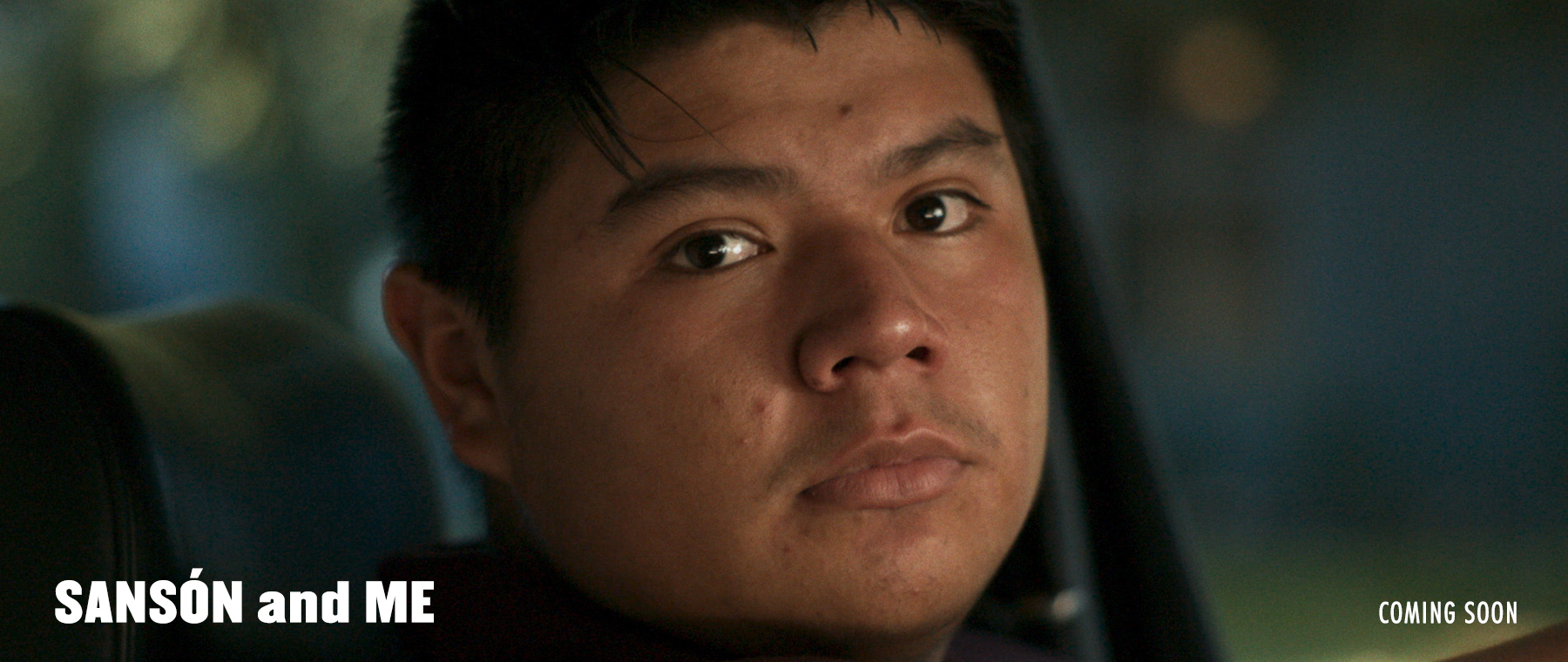SANSÓN AND ME
DIRECTOR'S STATEMENT
In 2012, about a year after I started working as a Spanish court interpreter in rural California, I was assigned to work on my first murder trial. I was very nervous because I understood the huge responsibility, I was carrying to do the best job I could in a setting where the stakes could not be higher.
Enter Sansón, a 19-year-old kid who was very quiet and super-polite, facing some of the most serious charges you can imagine. I sat next to him for three weeks, side-by-side with a fellow Mexican migrant whose future was on the line—but I never got to hear his story. Everything was focused on a single moment, on the incident that brought him to court, but not on who he was or where he came from.
At the end of the trial, Sansón was found guilty and sentenced to life in prison without parole; and I remember clearly that he got up, the bailiffs put his handcuffs on and he shook my hand and thanked me for my help. That image stuck with me. I couldn’t let him go. Did he really deserve such a harsh sentence? Life without the possibility of parole? He was just a kid! And we didn’t know his story. Where did he come from? What did he live through? And what happened to bring him into this situation? I could not help but think that as a fellow Mexican, there but for the grace of God went I.
A few months after the case ended, I met my dear friend Su Kim, who ended up producing the film. It was she who encouraged me to reach out to Sansón. I wrote him a letter and he responded with generosity, inviting me to visit him. The collaboration just grew naturally from that re-encounter, as we got to know each other and I became more and more connected to his story.
I realized just how necessary it was for this film to come to life when I saw the depth of the injustices he had endured. I’m talking about everything that happened to him before trial, all the trauma he experienced that nobody was held accountable for, that nobody tried to heal. Society had basically either ignored him or thrown the book at him—both Mexico and the USA had let him down.
The idea for the film is really born out of the obstacles and limitations imposed by the criminal justice system. I was not allowed to film Sansón himself, because the argument was that being in a film is like giving him a reward for his crimes. So this led to a unique cinematic challenge: how do you make a film about someone without interviews, without archives? Even recording phone calls was impossible because the quality and timing was so bad. Sansón would sometimes go for months without being granted a call.
To be fair, it took years to find the solution; years of trial and error testing everything from an animated approach to a more essayistic style. That was a dark time where nothing was clicking. But we kept going, pulled forward by Sansón himself who was the biggest champion of the process. He kept his faith, and that gave me strength to keep going all that time.
I remember re-reading our correspondence, and opening Sansón’s very first letter to me, and right there in those initial pages full of excitement and joy, he asked me point blank: Do you think they will let me get out of here to be a part in the movie? Or are you going to use an actor to tell my story? Back then, my answer was shortsighted and kind of lame, I told him documentaries had to stick to the truth. Yet Sansón had been right all along!
It was clear almost immediately that we could not go for a polished, Hollywood approach. We needed to invite his family to act in the film! They understood his story and were still living in his universe.
As my dear friend and mentor to the film, Alan Berliner, said to me time and time again, you have to listen to the story. Listen to what it wants and don’t be afraid to try, even if you have no answers. Once we hit on the concept for bringing the letters to life, I could hear both life and the film talking to me in the poetic language of cinema.
There is something terrible that happens inside our institutions and in the gaps of our society, where people fall into the abyss and are effectively erased, sent off to another planet. We may think, idealistically and even naively, that our courts will take care of these problem people, but really all they do is clean-up the mess and get it out of our sight.
I could have made a lot of stories about incarceration and immigration, but the fact is that Sansón is my friend. I love him and I don’t want his story to be erased. This film is my contribution to his resistance, and I hope that struggle rings true for the audience as well. ###
